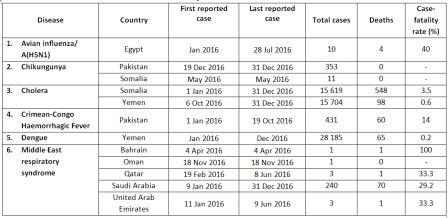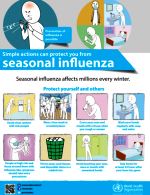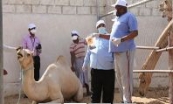Throughout 2016, WHO's Eastern Mediterranean Region faced several major outbreaks from emerging and re-emerging diseases, including cholera in Somalia and Yemen; Middle East respiratory syndrome (MERS-CoV) in Saudi Arabia; Chikungunya in Somalia and Pakistan.
The occurrence of emerging infectious diseases, including the outbreaks in recent years, have occurred in security-compromised countries with complex and protracted humanitarian emergencies where large populations are internally displaced and there is inadequate access to clean water, sanitation, safety and basic health services. Surveillance systems in fragile health systems may not be detecting all health threats early and in a timely manner. This compromises the effectiveness of public health response measures and makes populations more vulnerable to infectious diseases.
Avian influenza A(H5N1)
Egypt
Egypt is the only country in the WHO Eastern Mediterranean Region that continues to report human cases of avian influenza A(H5N1) since the virus was first reported in the country in March 2006 (Fig. 1). A total of 356 human cases of A(H5N1) have been reported in the country between 9 March 2006 and 31 December 2016; of these cases, 121 were fatal (case–fatality rate: 34%). In 2016, only 10 human cases of avian influenza A(H5N1) were reported, including 4 deaths (case–fatality rate: 40%).
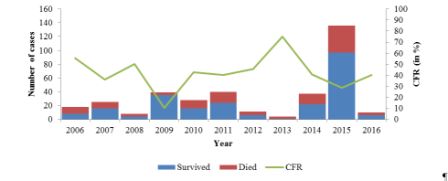
Fig. 1. Number of avian influenza A(H5N1) cases and case-fatality rate in Egypt, 2006–2016
More details at Weekly Epidemiological Monitor
Chikungunya
Pakistan
For the first time in its history, Pakistan reported laboratory-confirmed cases of Chikungunya in 2016. The first case was laboratory-confirmed on 19 December 2016 and since then until the end of December 2016, a total 353 suspected cases of Chikungunya were reported from several districts in the province of Karachi (Fig. 2). The majority of cases were reported from the Kokarpar area. The highest number of cases (86 or 24.4% of cases) were reported in the 30–39-year age group followed by the 20–29-year old age group (73 or 20.7% of cases).
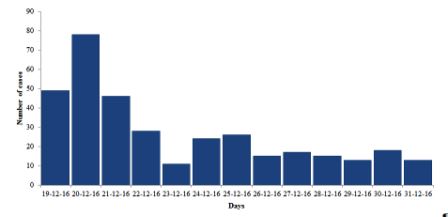
Fig. 2. Epidemic curve of Chikungunya in Pakistan, 19–31 December 2016
More details at Weekly Epidemiological Monitor
Somalia
During May 2016, Somalia reported a few sporadic cases of Chikungunya from its capital city, Mogadishu. At least 11 blood samples were tested positive for Chikungunya virus at the Kenya Medical Research Institute. The tests were done using rt-PCR, as well as by ELISA. This is also the first time that Somalia reported human infection caused by Chikungunya virus.
More details at Weekly Epidemiological Monitor
Cholera
Somalia
Cholera has been endemic in Somalia for the past two decades. Somalia has experienced multiple large cholera outbreaks during this period which were associated with significantly high mortality. In 2016, a total of 15 619 suspected cases of cholera, with 548 associated deaths (case–fatality rate: 3.5%) were reported in 9 out of 18 regions of Somalia. The regions include: Middle Juba, Lower Juba, Banadir, Hiraan, Lower Shebelle, Middle Shebelle, Gedo, Bay, and Bakool Regions (Fig. 3). The first case was laboratory-confirmed on January 2016 as Vibrio cholerae serotype of "Inaba" and "Ogawa" during this outbreak.
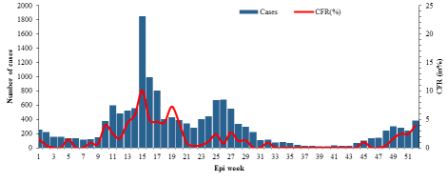
Fig. 3. Suspected cholera cases and deaths reported in Somalia, 1 January–31 December 2016
More details at Weekly Epidemiological Monitor
Yemen
After a gap of 5 years, Yemen reported a cholera outbreak in 2016. The last major outbreak reported from the country was in 2011, resulting in over 31 000 suspected cases, including 134 related deaths (case–fatality rate: 0.4%). By the end of December 2016, the Ministry of Public Health and Population reported 15 704 suspected cholera cases, including 98 associated deaths (case–fatality rate: 0.6%) from 157 districts in 15 governorates (Fig. 4). The first case was laboratory confirmed in October 2016, EPI week 34, as Vibrio cholerae 01.
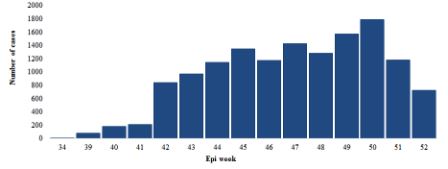
Fig. 4. Epidemic curve of suspected cholera cases reported in Yemen , Epi weeks 34–52, 2016
More details at Weekly Epidemiological Monitor
Crimean-Congo haemorrhagic fever (CCHF)
Pakistan
Crimean-Congo haemorrhagic fever is endemic in Pakistan. During the last few years, the country has seen an increasing trend and cases have spread from its established foci in Baluchistan province to all other provinces, including to the capital city of Islamabad. From January to October 2016, Crimean-Congo haemorrhagic fever cases recorded a dramatic rise and the number exceeded those reported in 2012, 2013, 2014 and 2015. A total of 431 suspected cases of Crimean-Congo haemorrhagic fever, including 60 deaths (case–fatality rate: 14%) were reported from 4 provinces in the country namely: Punjab, Sindh, Baluchistan, and Khyber Pakhtunkhwa provinces (Fig. 5).
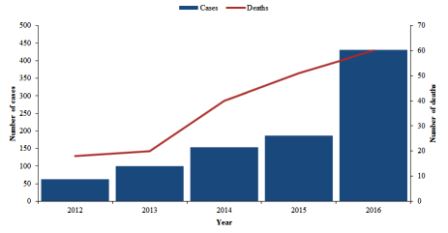
Fig. 5. Suspected cases of Crimean-Congo haemorrhagic fever reported from Pakistan, 2012–2016
More details at Weekly Epidemiological Monitor
Dengue
Yemen
Dengue fever is an endemic disease in Yemen, with outbreaks repeatedly occurring in a number of high-risk governorates over the last 10 years. In the year 2016, dengue fever recorded a substantial rise in Yemen. A total of 28 185 suspected cases were reported in the country between January and December 2016. A total of 65 related deaths were also reported during the same period (case–fatality rate: 0.2%), (Fig. 6).
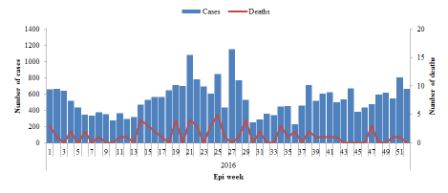
Fig. 6. Suspected cases and deaths from Dengue fever reported in Yemen, epidemiological week 1–52, 2016
Middle East respiratory syndrome (MERS)
Bahrain, Oman, Qatar, Saudi Arabia and United Arab Emirates
During 2016, MERS-CoV continued to circulate in the countries of Middle East and 5 member countries of the Gulf Cooperation Council: Bahrain, Oman, Qatar, Saudi Arabia and United Arab Emirates, all reported community acquired cases during 2016 (Fig. 7) (Table 1).
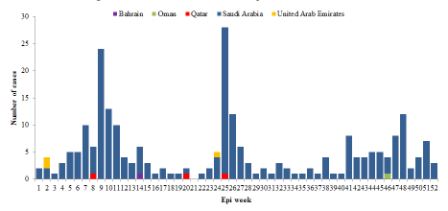
Fig. 7. Number of MERS-CoV cases per week in the Region, 2016
Table 1. Number of MERS-CoV cases and deaths reported from 5 countries in the Eastern Mediterranean Region in 2016

Since the virus first appeared in 2012, a total of 1877 laboratory-confirmed cases of MERS, globally, were reported to WHO until December 2016. There were at least 692 deaths (case-fatality rate: 36.8%) among these reported cases. (Table 2).
Table 2. Epidemiological characteristics of MERS-CoV cases reported globally between January and December in 2013 and 2016
The epidemiological and demographic characteristics of the virus (Table 2) have not changed since the virus was first reported in 2016.
Around 81% of the globally reported cases 1526 cases with 624 deaths (case–fatality rate: 40.9%); were reported by Saudi Arabia. The age group of those aged 50–59 years continues to be the group at highest risk for acquiring infection for both males and females. However, the females in the age group of 20–29 and 30–39 are acquiring MERS-CoV infection in higher numbers when compared to males in the same age group. (Fig. 8 and 9) People in the age group of 50–59 among the primary cases have higher deaths compared to secondary cases in the same age group.
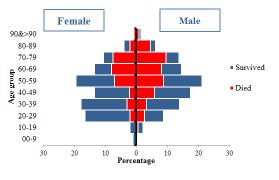
Fig. 8. Gender and fatality distribution of MERS-CoV cases reported from Saudi Arabia, 2012–2016
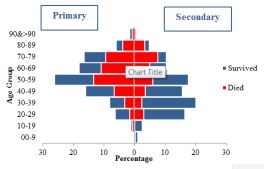
Fig. 9. Age and fatality distribution of primary and secondary cases of MERS-CoV reported from Saudi Arabia, 2012–2016
In 2016, there was a marked reduction of secondary cases of MERS in Saudi Arabia compared to previous years signaling that the transmissibility of the virus has not changed or increased (Table 3 and Fig. 10).
Table 3. Characteristics of MERS-CoV cases reported from Saudi Arabia, 2012–2016

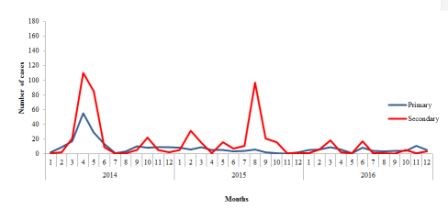
Fig. 10. Number of primary versus secondary cases of MERS-CoV in Saudi Arabia, 2014–2016
Health care workers continue to be at risk of acquiring infection from MERS-CoV. However, the number of health care workers acquiring infection owing to "unprotected exposure" is considerably low in 2016 compared to previous years (13% compared to average 18.7% reported since 2012) (Fig. 11 and 12).
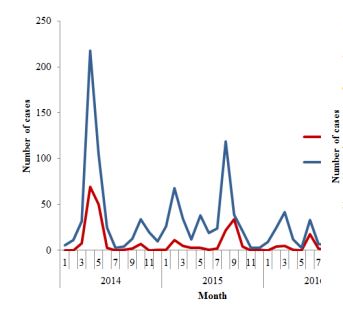
Fig. 11. Number of MERS-CoV cases among health care workers and non health care workers in Saudi Arabia, 2014–2016
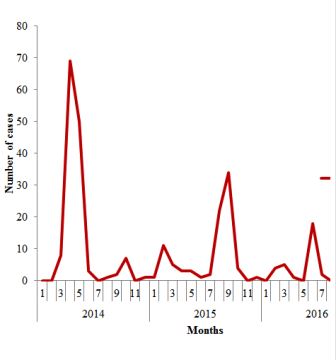
Fig. 12. Number of MERS-CoV cases in health care workers in Saudi Arabia, 2014–2016
Hospital outbreaks, small in frequency and number, compared to 2015 and 2014 were reported from the country in 2016 (Fig. 13, 14 and 15) (Table 4). Three hospital outbreaks were reported from MERS in 2016 in Saudi Arabia. The biggest of these hospital outbreaks was in Riyadh in June 2016.
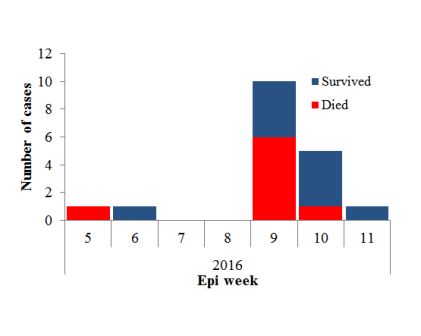
Fig. 13. Number of MERS-CoV cases during Buraida outbreak, March 2016 (n=18)
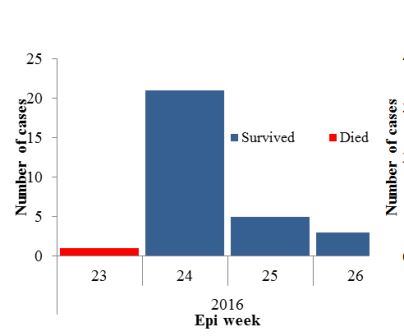
Fig. 14. Number of MERS-CoV cases duirng Riyadh hopsital outbreak, June 2016 (n=30)
Table 4. MERS-CoV outbreaks in Saudi Arabia, 2016
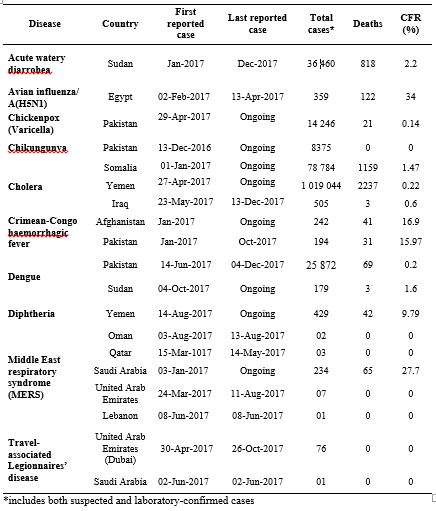
Table 5. Infectious disease outbreaks reported from the countries of the Region in 2016
